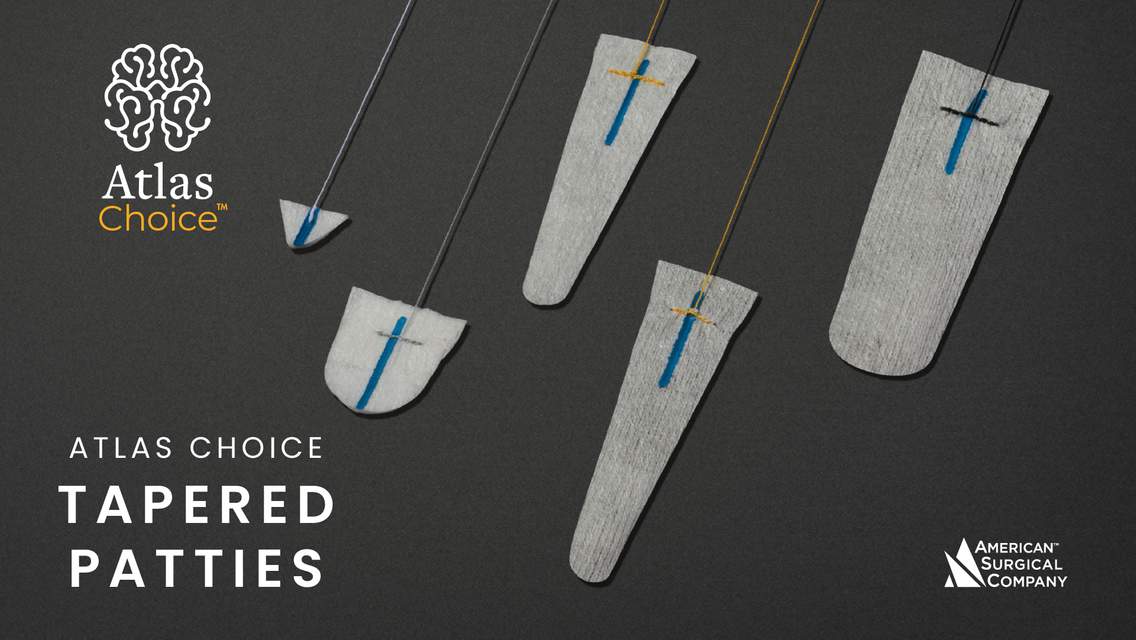Employment Details
Table of Contents: Employment Details
Compensation
- So how do neurosurgeon’s get paid? There are almost as many compensation models as there are physicians, so we will cover the basics of some of the more common pay models in the following sections. Pay is roughly divided into base pay, production pay, call pay and other pay/bonuses. The three most common models are pure salary, pure production and a hybrid of salary with production incentive.
- Recruitment email example:
- Dear Dr. X,
I am assisting in finding a qualified neurosurgeon for a well-funded and growing hospital which currently employees 2 neurosurgeons and is looking to expand. The position is hospital employed and you are supported by 2 shared PAs and your own clinic staff. This great opportunity is located in an ideal location with great schools and easy ocean access. The town is great with . . .
Here are some of the income stats:
- Base pay $500,000 - $600,000
- NP supervision $12,000
- Signing bonus $50,000
- Student loan forgiveness $25,000
- Relocation assistance $5,000
- House down payment $30,000
- ED call $144,000
Production bonus $83/wRVU over 7,300 wRVU. Group median wRVU is 9,211.
I look forward to hearing from you before this exiting and lucrative opportunity is gone.
Sincerely,
- Dear Dr. X,
- Pay Basics:
- Base Pay - guaranteed salary you will receive from the employer. Often with a stipulation of some minimum productivity measure to be met (either in wRVU production or calls or clinic or shifts, etc.). Be sure to have a thorough understanding of these minimum requirement prior to signing any contract to avoid any loss of income or disappointment. Typically listed as annual “gross” income.
- Additional considerations:
- Is this your only compensations?
- Are you responsible for practice expenses such as malpractice insurance, dean’s tax, employer/group withholdings, office staff salary, transcription fees, rent, supplies, other overhead, etc.
- Production Pay (Incentive Pay) - your reimbursement directly tied to your productivity.
- May be tied to a number of different productivity metrics but commonly is wRVUs for surgeons.
- Case Example:
Production bonus $83/wRVU over 7,300 wRVU. Group median wRVU is 9,211- Commonly only effective after exceeding pre-established threshold.
- At the median work the surgeon is making $158,613 in production bonus ($83 x (9,211 – 7,300)
- Clarify how and when bonus or supplemental income will be paid.
- MGMA and NERVES data are useful reference to better understand wRVU means and medians.
- Call Pay – compensation for call coverage, typically for emergency room coverage and acute transfers.
- May be paid in lump sum for yearly coverage or on a per shift basis
- Understand the fine details for the call coverage:
- In house requirement?
- Holiday coverage
- Finding alternates
- Hospital vs. Network coverage
- Advanced practitioner assistance
- Additional considerations:
- Alternate Income / Bonuses – many positions may offer a variety of additional bonus opportunities during negotiations and contract discussions. It is important to note that most forms of bonus are considered taxable income
- Supervising Activities- compensation for agree to supervise or train advanced practitioners. Note that training may detract from your overall productivity initially.
- Signing Bonus – there are a wide variety including up front lump sum versus a loan which must be repaid. Many signing bonuses have a minimum employment term and if you voluntarily depart prior to the period ending you will be required to repay a prorated amount.
- Relocation Assistance – moving expenses, etc. Relocation assistance is sometimes contingent upon you staying with the employer for a certain amount of time. If you leave prior to that time you may be required to repay part of the relocation money.
- Student Loan Forgiveness – may be contingent on a specified duration of employment or other production based goals.
- Housing Down Payment – home purchase assistance intended help a physician settle quickly and develop roots in a new community quickly, thus making them more inclined to stay. May have some time obligation or possible repayment terms.
- Other Pay Considerations
- Will your compensation be based on collections?
- Compensation directly tied to what a patient/insurer pays for your services
- May be impacted by payer mix and patient insurance status.
- May be more common for private groups.
- Group Pay Distribution – understand how pay in a private group may be distributed – is it only on wRVU, collections, etc.?
- Examples:
- Group A: In some groups the funds are distributed exactly how they are collected so if you collected the most you earn the most. In other groups the money is distributed based only on wRVU without regard to collections. So for example you could only operate on cash-pay patients and have 100% collections and generate 1/3 of the wRVUs while your partner only does surgery for non-paying patients with 0% collections but generates 2/3 of the wRVUs. If pay were distributed solely based on wRVU proportions then all of your income (as your partner collected no money form patients) would be distributed 1/3 to you and 2/3 to your partner. If pay were distributed based on collections you would get all of the money and your partner would get none of the money.
- Group B: Some groups have a bonus production pot. The group will keep back a certain percentage or fee from each surgeons collections then distribute the bonus pot in various ways. We know of a group where the senior partners decided to keep 5% of the collections in a bonus pot. Each quarter the bonus pot was awarded in an all-or-none fashion to the surgeon with the highest quarterly collections. The pot was always won by one of the two senior partners. As soon as a junior partner increased their practice and won the pot two times in a row the senior partners decided to do away with the winner-take-all pot.
- Group C : A group of four neurosurgeons wanted partners to earn mostly what they collect but to not discourage surgery on patients who were less likely to pay. Each month each partner received 60% of their collected money. The remaining 40% was retained by the group and divided based on proportion of wRVU of each partner. For example one partner did a lot more surgery at a lower-income hospital. They collected $30,000 for the month and did 35% of the wRVU of the group that month. The group as a whole took in $220,000 for the month. Thus the neurosurgeon received $18,000 for their collections ($30,000 x 60%) and $30,800 from their wRVU production ($220,000 x 40% retained x 35% of wRVU done). So they took home $48,800 for the month total.
- Will your compensation be based on collections?
- Other Income Streams – There are a host of other income streams which me be available including, imaging centers, hospitals/clinics, adjunct medical groups, industry partnerships, etc.
- Opportunity to buy stake in a service of facility – ie. Outpatient surgery center or imaging center.
- There are also self referral implications and Stark law regulations which you must be aware of before you take on such opportunities.
- Retirement / Investing / Savings – consider use of a financial planner early in your career to evaluate your financial status as your start practice and periodically after you start practice to ensure you are on the correct path for savings.
- Resources:
- Understanding physician compensation from NEJM
- American College of Physicians 3 Ps of compensation
- Adventures in Medicine short article about compensation models
- American College of Physicians compensation worksheet (towards the bottom of the PDF)
- Base Pay - guaranteed salary you will receive from the employer. Often with a stipulation of some minimum productivity measure to be met (either in wRVU production or calls or clinic or shifts, etc.). Be sure to have a thorough understanding of these minimum requirement prior to signing any contract to avoid any loss of income or disappointment. Typically listed as annual “gross” income.
- Recruitment email example:
Contract Awareness
- The legally binding agreement between the neurosurgeon (employee) and group or hospital (employer). No website or resource list can serve as a comprehensive guide or substitution for legal advice, but we will highlight some of the aspects of contracts to be aware of. There is also no "ideal" or "perfect" contract as a contract is dependent on the needs of the employer and employee. Many employers use a common contract for most employees but contracts are often negotiable. You may try and request to see anonymous contrast from providers in the group that you are joining to get a sense of the flexibility, although, even the most transparent of organizations may not permit this.
- Term of Employment - specifies how long the employment will last.
- Defined in months or years with terms for renewal (be aware of renewal options as they may possess leverage for future negotiations).
- Contract Examples:
- Poor Contract - "The physician's employment will begin on __________ and continue for a period of two (2) years from that date, unless earlier terminated as provided in this Agreement. This Agreement does not construe or form the basis for any right or privilege of renewal of the term of employment."
- Note: The above clause gives the physician two years of employment but no stipulations are provided for future employment. The employer can wait until the last day of the two years then offer a worse contract (or no further employment) which puts the physician in a bind to either quickly accept a contract or be unemployed.
- Acceptable Contract - "The physician's employment will begin on __________ and continue for a period of two (2) years from that date, unless earlier terminated as provided in this Agreement. The Employer and Physican will meet at least one-hundred twenty (120) days prior to expiration of the term of this contract to negotiate any renewal of this Agreement."
- Note: The above again gives two years of employment but specifies when renewal will occur. This gives both the employer and employee time to discuss renewal and work towards a new acceptable contract.
- Good Contract - "The physician's employment will begin on __________ and continue for a period of two (2) years from that date, unless earlier terminated as provided in this Agreement. The Employer and Physican will meet at least one-hundred twenty (120) days prior to expiration of the term of this contract to negotiate any renewal of this Agreement."
- Note: The above again gives two years of employment but specifies when renewal will occur. This gives both the employer and employee time to discuss renewal and work towards a new acceptable contract.
- Poor Contract - "The physician's employment will begin on __________ and continue for a period of two (2) years from that date, unless earlier terminated as provided in this Agreement. This Agreement does not construe or form the basis for any right or privilege of renewal of the term of employment."
- Termination of Employment – your contract should specify how or when a physician may be terminated.
- Contract Examples:
- Poor Contract – "The Employer reserves the right to terminate this agreement and the Physician's employment with or without any cause provided given the Employer provides no less than thirty (30) calendar days of prior notice."
- Note: This contract specifies the physician is employed at the will of the employer and can be fired for whatever reason, whenever the employer chooses to. The physician then only has 30 days to find new employment.
- Acceptable Contract – "Neither party may terminate this Agreement during the first two (2) years of the Agreement without cause. Either party may terminate this Agreement after the first two (2) years of the Agreement provided they give written notice to the other party no less than one-hundred twenty (120) days prior to the termination of the Agreement."
- Note: This contract locks the physician into the working for the employer for at least two years unless they are fired for a cause. The physician cannot be fired in the first two years without a cause but after that they can be fired without a cause as termination is otherwise unspecified after the first two years.
- Good Contract - "The Employer may terminate this Agreement, for cause, after the Physician is given written notice of the specified grounds of termination. If the cause is not remediated within fourteen (14) days after receipt of the written notice by the Physician then the Employer shall retain the immediate rights to terminate this agreement."
- Note: The physician can only be fired for a cause, but the physician retains a two week period to remediate or fix the grounds for termination. As an example, a hospital said they would fire a surgeon after they became chronically overdue on operative notes affecting the income of the hospital and gave the surgeon a two week notice. The surgeon caught up on the operative reports, and stayed up to date on them, so the hospital could not fire them.
- Poor Contract – "The Employer reserves the right to terminate this agreement and the Physician's employment with or without any cause provided given the Employer provides no less than thirty (30) calendar days of prior notice."
- Contract Examples:
- Call Responsibilities – your contract will often specify the terms of your call responsibility. Ideally call responsibility should be clearly delineated and the expected shifts outlined to ensure appropriate coverage.
- Call Contract Examples:
- Poor Contract – "Physicians must participate in the call pool to ensure call for their specialty is assured for 24-hours per day, 7-days every week without gap at the Employer's discretion. The Physician is solely responsible for the arrangement of any alternative call coverage required by another physician with medical staff privileges at the hospital with a similar specialty if the Physician is unable to take the assigned call."
- Note: The hospital can essentially assign any call they want to the physician and the physician is responsible for getting coverage if they are unavailable.
- Acceptable Contract – "Physicians must participate in the call pool to ensure call for their specialty is assured for 24-hours per day, 7-days every week without gap. Call assignments shall be shared on a substantially equal basis between all physicians in the call pool with ability to cover the similar specialty service."
- Note: They specify call is shared on a mostly equal basis with others in the call pool. If you are one of six neurosurgeons the hospital employs this may not be bad, but what happens everyone else leaves and there are only two of your left, or just you?
- Good Contract - "Physicians must participate in the call pool to ensure call for their specialty is assured for 24-hours per day, 7-days every week without gap. The Physician is required to take at least four (4) call rotations per month and are not required to take more than eight (8) call rotations per month. Under certain circumstances the Physician may be asked to take more than eight (8) call rotations per month for which they will be compensated extra as specified in this Agreement for additional work rendered. The Physician is under no obligation to take more than eight (8) call rotations per month."
- Note: The contract specifies the minimum and maximum call per month. They can ask for you to take more call but must pay you more, but you are not obliged to take more call if you do not want to. The hospital is on the hook for finding the extra call coverage once you reach your eight calls that month.
- Poor Contract – "Physicians must participate in the call pool to ensure call for their specialty is assured for 24-hours per day, 7-days every week without gap at the Employer's discretion. The Physician is solely responsible for the arrangement of any alternative call coverage required by another physician with medical staff privileges at the hospital with a similar specialty if the Physician is unable to take the assigned call."
- Call Contract Examples:
- Term of Employment - specifies how long the employment will last.
Physician Liability Insurance
- Ensure you have appropriate coverage and tail insurance as claims are possible month or years after the event in questions.
- Tail Insurance - policy which says, for a fee, they will cover any malpractice claims brought against you, for actions that occurred while you were at a certain hospital, after you have left that hospital.
Non-competes / Restrictive Covenants
- Specify if you cannot work for other employers within a certain area within a certain time frame. They are typically included to prevent a doctor from being hired by another local hospital.
Employment Benefits
- Besides a salary many employees can and should offer additional benefits. If the employer cares about the employee these benefits should be specified and available.
Dispute Resolution
- Procedures specify what recourse you have with the employer in the event of a dispute.
Compliance With Employment Requirements
- These are the requirements which you must meet to be able to successfully do you job. You should ensure these requirements are not overly onerous or unrealistic and that you have a good sense of what will be required.
Resources
- Medical Group Management Association Guidebook to Contracts
- American College of Physicians contract explanations
Please login to post a comment.











